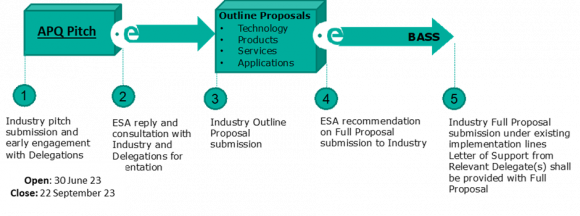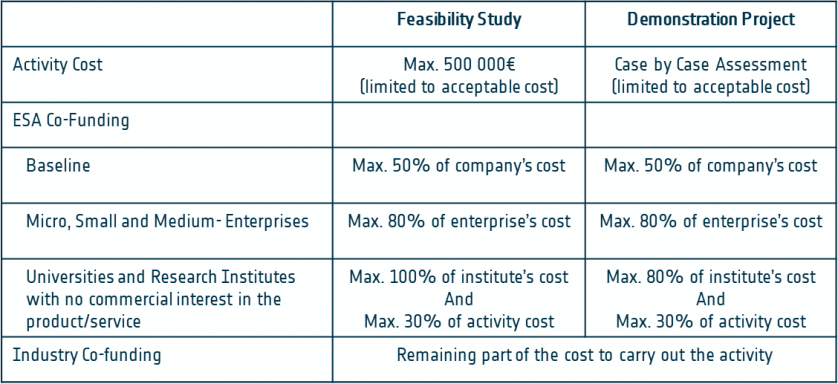***CLOSING DATE EXTENDED TO 24 NOVEMBER 2023***
This call is part of the umbrella of “Space for Infrastructure” thematic call for proposals.
This infrastructure includes ports, harbours, airports and roads, the pipeline networks, depots and facilities associated with these networks and the public and private transport services that operate on them. The physical components of transport infrastructure also include bridges, tunnels, pavements, wharfs and pipes.
This sub-theme includes a large variety of applications that leverage improved transport infrastructure. For air transport, for example, applications can support the airports in a range of ways including:
- Becoming carbon neutral
- Obtaining 'green-certified' terminals
- Reducing on-airport vehicle emissions by switching to vehicles with alternative fuels and low-emission technology
For road transport, for example, in addition to the monitoring and maintenance of critical infrastructure, applications may be developed to enhance the connectivity across countries by improving international corridors as set out in the EU Global Gateway strategy1
- Replanning alternative routes during a disaster/crisis
- Recovery from failure of critical connection
- Innovating the road safety inspection procedures by gathering information about the area using space data
For maritime transport, for example, there are applications reinforcing maritime navigation through the upgrading of basic port infrastructure
- The installation of on-shore power supply
- Improving inland waterway transport, including cross-border waterway connections, which will help create a cross-border inland waterway connection between countries.
Value Of Space
Satellite technologies and data have a significant role to play within prospective services:
- Satellite Communications (SatCom) enables the provision of ubiquitous connectivity to enhance the communication links, connectivity of IoT devices, support for remote locations. In addition, satellite communications can provide real-time, long-range communications with infrastructure monitoring systems (i.e. UAVs/robots/remote assets). Example applications include and are not limited to:
- SatCom enabling real-time communications between a central air-traffic hub and the operation of remote airfield towers.
- Monitoring of IoT devices for road asset monitoring.
- Enabling of robotic systems for autonomous service vehicles (i.e. Refuelling, tug boats, cargo crane driving, logistics transfer within ports)
- Global Navigation Satellite Systems (GNSS) can be used to enable geo-referencing of in-situ data, as well as navigation and tracking of vehicles, people and goods; PNT. GNSS-based technologies can be used for time-stamping reference system information, ensuring the traceability of the data. For example, GNSS allows the tracking and navigation of uncrewed vehicles and can help enabling the automation of water infrastructure maintenance through robotics or UAVs. Example applications include and are not limited to:
- Navigation of autonomous infrastructure maintenance vehicles. E.g. Drones
- Geo-fencing assets and vehicles.
- Maintenance data validation.
- Sensitive goods tracking. E.g. Air turbine blades
- Satellite Earth Observation (satEO) (including next-generation nano satellite and CubeSat networks) can be used for the monitoring of the status of the working sites, the planning, construction and maintenance of the infrastructure, collecting information on geographical and environmental parameters for the sustainability analysis, integration of environmental data; identification of patterns and trends that may be linked to infrastructure safety risks, and provide insights into how to best address them. Example applications include and are not limited to:
- Remote monitoring of large areas. I.e. Road infrastructure and predicting maintenance due to land height changes.
- Prediction of the effects of extreme weather events on installed infrastructure.
- Environmental impact of the installation of new infrastructure.
- Asset tracking
- Legislation enforcement. I.e. Enforcement of environmental legislation around the impact of ports on marine life.
What We Are Looking For
We look for teams that have identified an attractive market opportunity with real potential to engage customers. Motivation, business experience and domain expertise are all important features. We want to hear about your ideas that involve the utilisation of either space technology or space data.
In particular we are looking for those opportunities which are going to become market disruptors to either the air, land or sea (or combination of any/all) transport infrastructure markets and which have a high level of innovation.
How To Apply
- Register your team on esa star Registration (https://esastar-emr.sso.esa.int) today! If your team is made up of more than one company or organisation, each entity will need to register.
- Scroll down to the ‘Downloads’ section of this webpage to download all the official documents. Official documents include a document explaining the scope of this opportunity and the past two webinars hosted by ESA.
- Download the Activity Pitch Questionnaire template and submit your pitch as instructed in the Activity Pitch Questionnaire guidelines, through the form online.
- ESA will evaluate your pitch. Teams whose pitches are positively evaluated will be invited to prepare an Outline Proposal and then a Full Proposal. Teams must obtain a Letter of Authorisation from their respective National Delegation before submitting a Full Proposal. Contact details of all National Delegates can be found here: National Delegation(s).

Funding Scheme
Funded participation is open to any company and/or organisation, be it as group of users, public body or non-governmental organisation, residing in any of the ESA Member States that are participating to the programme as specified in the Letter of Invitation in esa-star.
The applicable funding level of the individual prime- or subcontractors is subject to authorisation by the involved National Delegation(s). Therefore bidding teams are requested to obtain a Letter of Authorisation from all their national delegations before submitting a Full Proposal.
The funding level is summarised in the table below:




